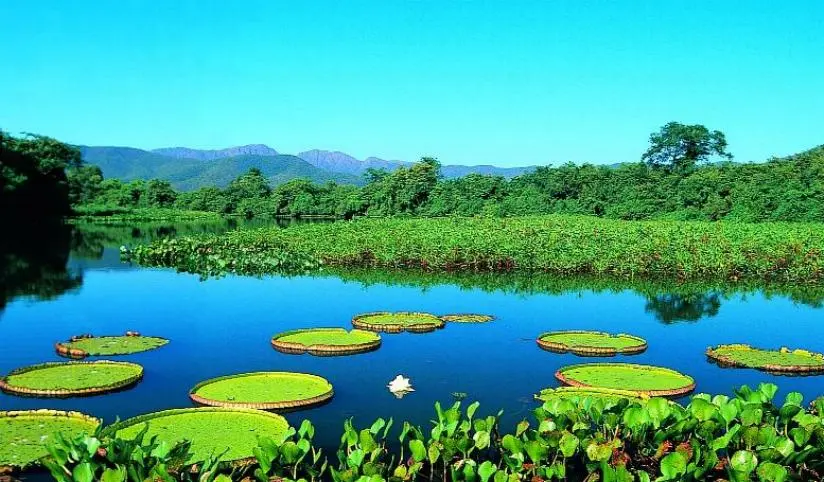Plants are the basis of our existence and we depend on them to obtain 80% from our food and 98% from the oxygen we breathe. However, globalization and rising temperatures have presented worrying challenges for plant health and, consequently, for the sustainability of the planet.
International travel and trade have facilitated the introduction and spread of plant pests which, in turn, have been identified as a major cause of biodiversity loss. Rising temperatures have created new niches for these pests to populate and spread, posing an additional threat to the environment and the web of life that sustains our planet. In response, pesticide use can increase to contain the spread of pests, but this can harm pollinators and natural enemies of pests, as well as other organisms important to a healthy environment.
Protecting plant health is essential to maintaining the planet's sustainability, and ecological practices such as integrated pest management are key to preserving biodiversity. In addition, international standards for phytosanitary measures (ISPMs) International Standards for Phytosanitary Measures ) in trade help to prevent the introduction and spread of plant pests across borders.
In celebration of International Plant Health Day 2023, celebrated on May 12th, it is important that everyone is aware and takes action to keep our plants healthy in order to preserve the environment and biodiversity. It is essential that businesses, governments and individuals take responsibility for protecting plant health to ensure a sustainable future for all.
How to Protect Plant Health and Preserve Biodiversity
Plants play a crucial role in sustaining life on Earth as they provide food, oxygen and are the base of the food chain. However, increased international travel, trade and global warming have introduced and spread plant pests, which are a major cause of biodiversity loss.
In this context, the International Plant Health Day, celebrated on May 12, is an opportunity to raise awareness of the importance of protecting plant health and preserving biodiversity. Here are some measures that can be taken to achieve this goal:
- Integrated Pest Management: This approach involves using various techniques to control plant pests, such as crop rotation, biological control, and using pesticides only when necessary. This helps reduce exposure to pesticides, which can be harmful to pollinators and other beneficial organisms.
- International Standards for Phytosanitary Measures: The ISPMs (International Standards for Phytosanitary Measures) are a set of measures and procedures aimed at preventing the introduction and spread of plant pests across borders. These standards help ensure that international trade in plants and plant products is safe and sustainable.
- Education and awareness: Raising awareness of the risks of plant pests and the importance of plant health can help prevent the spread of pests and promote more sustainable practices. Awareness campaigns can involve disseminating information on how to identify and control plant pests, as well as the use of sustainable agricultural practices.
- Investments in research and development: Scientific research can help identify new ways to control plant pests and develop more sustainable agricultural practices. Investment in research and development can lead to more effective and sustainable solutions for protecting plant health and biodiversity.
Brazilian Plant Biodiversity Preservation Programs: a Commitment to the Future
Brazil is a country extremely rich in biodiversity, harboring one of the greatest diversity of plant species in the world. To protect and preserve the rich Brazilian flora, the country has several programs and public policies.
One of the main Brazilian programs for the preservation of plant biodiversity is the National System of Nature Conservation Units (SNUC), created in 2000. The SNUC establishes several categories of conservation units, ranging from national parks to private reserves of natural heritage . These areas protect biodiversity and ensure the preservation of plant species in their natural habitats.
Another important program is the National Program for the Conservation of Endangered Species (Pró-Espécies), which aims to preserve species that are at risk of extinction in the country. The program is responsible for developing conservation actions for several plant species threatened with extinction, such as the juçara palm, the brazilwood and the yellow ipê.
Another important initiative is the Long-Term Ecological Research Program (PELD), which carries out studies and research in several protected areas in the country, such as the Amazon and Cerrado Biological Reserves. These studies help to better understand the ecological dynamics of these ecosystems, contributing to the development of more effective preservation policies.
However, despite advances in the preservation of plant biodiversity in Brazil, there is still much to be done. Deforestation, predatory exploitation and the introduction of invasive species are still significant threats to the Brazilian flora. It is necessary to continue investing in preservation policies and environmental awareness to guarantee the protection and conservation of the rich biodiversity of plants in the country.
Biomas do Brasil Program: Conserving Biodiversity and Combating Climate Change
Brazil is a country of extensive natural wealth, with several biomes that are home to a wide variety of animal and plant species. However, human activities, such as deforestation and the illegal exploitation of natural resources, put the preservation of these ecosystems and their species at risk. It is in this context that the Biomes do Brasil Program emerges, with the mission of combating climate change and its impacts, ensuring the preservation of the environment and mitigating the effects of global warming.
The Biomas do Brasil Program seeks to disseminate the ecological, genetic, social, economic, scientific, educational, cultural, recreational and aesthetic values of biodiversity, promoting the conservation of remaining natural resources and unique areas for their richness and natural exuberance. The program operates under the principle that conserving and preserving natural ecosystems and their biodiversity is to perpetuate life. It promotes research and development initiatives aimed at strengthening resilience and adaptability to climate-related risks and natural catastrophes. It also seeks to make the population aware of the importance of defending, preserving and conserving natural resources, which are threatened by real estate speculation, fires, mineral extraction and illegal and/or predatory extractive exploitation of fauna and flora.
The Biomas do Brasil Program will be implemented in preserved and/or anthropized areas, of high biological relevance and natural landscape value, located in the Brazilian biomes of the Amazon Forest, Atlantic Forest, Cerrado, Pantanal, Pampa and Caatinga. It is intended for the creation and maintenance of full protection and sustainable use conservation units, in particular, environmental parks in the form of Private Natural Heritage Reserve (RPPN), which contain improvements and structures for conservation and public visitation.
Biomas do Brasil also seeks to ensure the sustainability of its projects in the long term, providing follow-up and financial support for their maintenance and development. In its magnitude, the program will also promote the recovery of degraded areas, the reforestation of native forests and the implementation of scientific research structures, with emphasis on phytotherapeutic and pharmacological ones, based on the regional flora.
The Biomas do Brasil Program is an essential initiative for the preservation of biodiversity and the fight against climate change in the country. Its activities in different biomes and conservation actions and socio-environmental awareness are essential to ensure environmental sustainability and quality of life for future generations.




